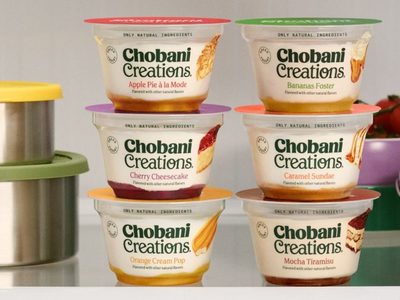 KANSAS CITY — Sugar and corn sweetener supply and demand pictures appear muddled heading into 2018-19 (beginning Oct. 1 for sugar) and calendar 2019 for corn sweeteners. Sugar supplies are forecast lower, and corn refining capacity is set to shrink. Yet there also are indications sugar demand may be easing (though still up from the prior year) while high-fructose corn syrup demand likely will continue its multi-year downtrend.
KANSAS CITY — Sugar and corn sweetener supply and demand pictures appear muddled heading into 2018-19 (beginning Oct. 1 for sugar) and calendar 2019 for corn sweeteners. Sugar supplies are forecast lower, and corn refining capacity is set to shrink. Yet there also are indications sugar demand may be easing (though still up from the prior year) while high-fructose corn syrup demand likely will continue its multi-year downtrend.
The U.S. Department of Agriculture, in its July 12 World Agricultural Supply and Demand Estimates report, projected total U.S. sugar supply for 2018-19 at 14,347,000 short tons, raw value, down 1.5% from the current year as a 6% decline in combined domestic beet and cane sugar production (from a record level in 2017-18) more than offset a 7% increase in beginning stocks and a 4.6% increase in total imports (which includes a projected 30% increase from 2017-18 in sugar imports from Mexico).
Forecasting sugar supply can be challenging due to the vagaries of weather and imports (especially from top supplier Mexico), but pegging demand typically is far more elusive.
The U.S.D.A. in its WASDE lowered its forecast of sugar deliveries for food in the current marketing year (ending Sept. 30) by 65,000 tons, or 0.5%, from its June forecast after previously trimming 25,000 tons in June from its May forecast. Current sugar deliveries for food forecast at 12,235,000 tons compared with the initial 2017-18 projection of 12,322,000 tons made in May 2017 and with 12,102,000 tons in 2016-17. Some in the trade expect current-year deliveries may be trimmed a bit more to around 12,200,000 tons. The U.S.D.A. also lowered from June its projected 2018-19 deliveries for food by 100,000 tons, or 0.8%, to 12,400,000 tons. Despite the pullback, it should be noted projected deliveries of sugar for food still mirror population growth of about 1% per year, with 2017-18 deliveries forecast up 1.1% from a year earlier and 2018-19 deliveries projected up 1.3% from the current year. So the rate of increase appears to be slowing, contrary to an actual downturn in sugar demand. At the same time, there has been a gradual increase in sugar use to replace HFCS over the past several years.
U.S. sugar deliveries for food and beverage use during the October-May period (the first seven months of 2017-18 sugar marketing year) were down 1.3% from the same period a year earlier, according to the U.S.D.A. Beet sugar deliveries were especially strong in the March-April-May period of 2017, which makes a decline this year look more dramatic. Total deliveries for bakery, cereal and related (the largest sugar-using segment accounting for 23% of total deliveries) were down 2.9%, with wholesale grocers, jobbers and dealers (second largest segment at 20%) down 5%. But retail grocery (about 12% of total use) was up 2.8%, confectionery (11%) was up 7%, ice cream and dairy (7%) was up 6% and beverages (6%) was up 0.6%.
U.S.D.A. data indicated total sugar deliveries for domestic consumption were above the same month of a year earlier in 6 of the 12 months from March 2017 through April 2018 and were below in 6 months. But analysts warned not to put too much stock in month-to-month versus longer-term changes. Sugar deliveries for domestic consumption on a calendar year basis increased six consecutive years since 2010, peaking at a record 12,115,000 tons in 2016 before easing 0.1% in 2017.
Also on July 12, Ingredion, Inc. announced plans to cease corn wet milling operations at its Stockton, Calif., plant this calendar year — a move that had been rumored for some time. The plant produces mainly 42% and 55% HFCS and industrial starch. The move is expected to take about 3% out of total U.S. HFCS production capacity. It will be the first U.S. plant closure since Cargill ceased HFCS production in Memphis, Tenn., in early 2015.
Unfortunately, per capita consumption data is not as current as sugar and corn sweetener production/delivery data. The U.S.D.A. updates per capita data annually, with the most recent full-year data for 2016. What that data has showed, however, is a 15.5% decline in total caloric per capita consumption from a peak of 151.6 lbs in 1999 to 128.1 lbs in 2016. During that time, refined sugar consumption has increased 5% (3.3 lbs per capita), while total corn sweeteners have declined 32.5% (including a 35% drop in HFCS). HFCS per capita consumption has decreased every year since 2002. It should be noted that per capita sugar consumption in 2016 was down 32% from its peak in 1972.
Meanwhile, exports of HFCS to Mexico surged after 2008 when the North American Free Trade Agreement went into effect for sweeteners, offsetting a surge in exports of sugar from Mexico to the United States. Although corn refiners have trimmed production capacity during that time, it has been far less than the decline in domestic HFCS consumption due to increased sales to Mexico. HFCS production declined 12% from its recent peak in 2006 through 2017, with annual production declines since 2010.
From a pricing standpoint, it appears that prices likely will be higher in 2018-19 for sugar and in 2019 for corn sweeteners. Most of the refined beet sugar currently being delivered was sold early in calendar 2017 at 30c to 32c a lb f.o.b. Midwest (with the current spot price at a nominal 36c a lb). More than 50% of potential beet sugar production for 2018-19 delivery has been sold between 33c and 34c f.o.b. Midwest, up 2c from prices paid for current deliveries. Most corn sweeteners are contracted on an annual basis with prices for the current year flat to up modestly from 2017. But refiners already are pitching reasons for higher offers for 2019 contracts, with negotiations likely to begin in early August.



